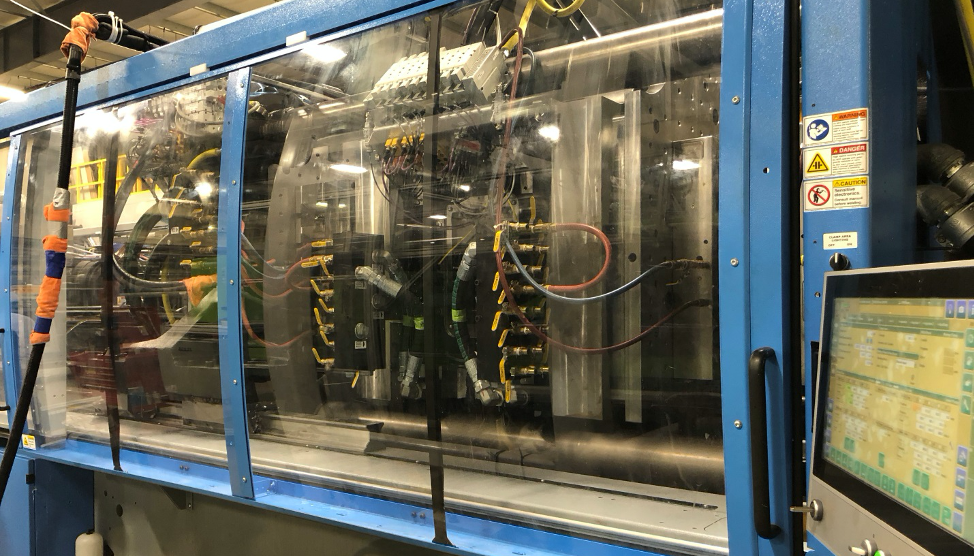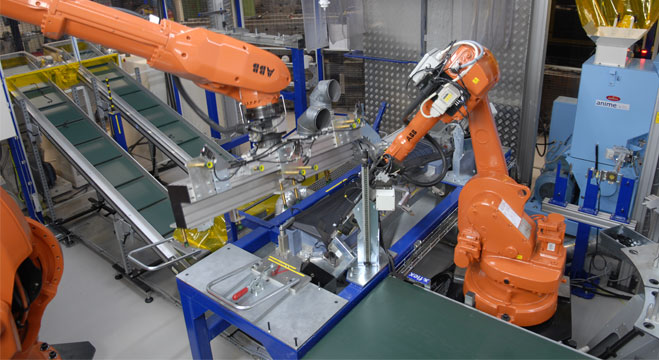

Maple
Powerful math software that is easy to use
• Maple for Academic • Maple for Students • Maple Learn • Maple Calculator App • Maple for Industry and Government • Maple Flow • Maple for Individuals







With MapleSim you can run a newly designed virtual model against your controller to test and fine tune performance.


MapleSim’s high fidelity machine simulations provide a virtual test bed for controller design.
Control engineers can perform testing and debugging by running the virtual PLC code against the machine’s virtual prototype.
This can result in reduced timelines for physical machine commissioning by allowing controller development to happen in parallel with the machine design – and allows errors to be found earlier before the machine design is finalized. Cut costs and give your customers greater confidence in your ability to deliver machines, on time and on budget.
You can discover more about using MapleSim’s flexible code connectivity options here.
Creating a MapleSim digital model gives a virtual representation of your product and is the first step to applying virtual commissioning and digital twins to step up your operations.
The digital model can be used at the following stages of the product lifecycle:
Read more about the steps to connect MapleSim models to a Digital Twin platform to automate tuning and introduce real-time diagnostics to your production machines.
To meet new performance requirements for a new line of horizontal injection molding machines, engineers at Niigon Machines Ltd were faced with cost-prohibitive upgrade options for a machine that was already deployed at a customer site.
Using virtual commissioning techniques with MapleSim, engineers at Niigon were able to model, analyze and optimize the production machine without removing hardware from the customer site. Niigon developed a simulation-based model in MapleSim that could replicate vibration issues they saw on the physical machines during higher production speeds. After the model was validated, their control engineers used it as a virtual test platform to diagnose their control code, all without the need for a site visit.
Model-based controls testing is a key benefit of virtual commissioning, since the engineers could run countless scenarios using only software, saving weeks of physical, on-site testing, and preventing damage to the machine.
After implementing two major optimization strategies, Niigon successfully reduced the machine cycle time by over 25%, and effectively eliminated the oscillation issues during production, without the need for a hardware upgrade.


With over 250,000 robots installed worldwide, engineers at ABB's Robotics business unit understand the challenges of designing and controlling robotic manipulators. Their design process required rigorous testing with the aid of simulation models which became very tedious when using testing tools that did not communicate well.
ABB performs system-level testing using a complex test environment built with Simulink. It was vital that the MapleSim digital model could be exported directly to Simulink®. This capability was provided by the MapleSim Connector add-on, which automatically creates S-function blocks from the symbolic system equations thus creating code that is compact and highly efficient.
ABB used MapleSim to develop high-fidelity manipulator models that included flexible joints, gears, and dynamic friction, and found MapleSim's graphical interface eliminated the need to derive and manipulate equations, drastically reducing the time needed to model a manipulator.
Using MapleSim, ABB engineers was able to create multiple models in the same amount of time it was previously taking them to create just one. ABB was able to dramatically reduce their model development and testing time, get up to speed quickly and improve their existing toolchain.
Expand your modeling capabilities into specialist fields with the MapleSim add-on libraries
Maplesoft Engineering Solutions can provide you with expertise and technology to meet your project requirements quickly. Professional services include product design validation and optimization; code development for in-the-loop simulations; analysis & design calculation tools; and customized training.
Turnkey solutions from Maplesoft Engineering Solutions offer a low-effort way to test out virtual commissioning for your own projects by fast-tracking delivery of an initial model – no previous modeling expertise is required.